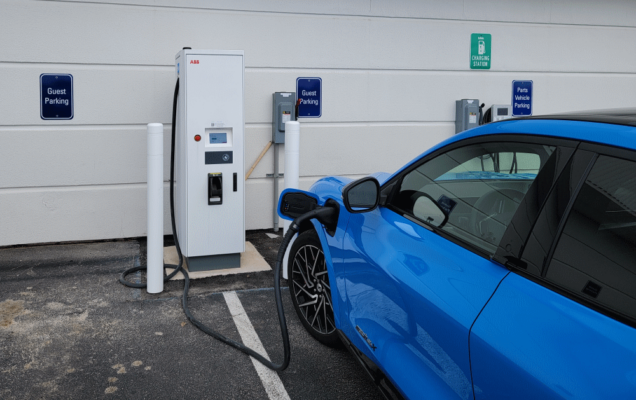You’re not wrong, but “doomed” is overblown…

I totally agree with Jonathan Gitlin that we need better DCFC charging infrastructure. But, I can’t help but see some holes in the whole “EVs are doomed…” thing. First, and most glaring, is actually something that Jonathan says out loud.
No, the problem is whether or not any of the chargers will be working when you arrive. (Unless you’re driving a Tesla, since Superchargers are painless to use and appear to be extremely reliable.)
The parenthetical there highlights that DCFC infrastructure reliability is mostly a not-Telsa problem, but what it doesn’t mention is that Telsa DOMINATES the US EV market. So, yeah… definitely a problem, but only for the rest of us :). Again, I totally agree that DCFC for not-Telsa EVs needs improvement, but we’re working on that. There is a tipping point, which we’re really close to, if not already over, which will trigger a DCFC building spree. That’s not going to fix it for my road trips this summer, and maybe not next year, but it could quite possibly get sorted for the following. Also worth mentioning here, is that ICE infrastructure experienced the same growing pains; we know how that worked out. As much as it sucks to be patient, ultimately that is what we need to do. Well, and plan our trips, as Jonathan mentions.
Even in the fateful anecdotal story of hardship, he makes it to his destination. Albeit with some anxiety around broken chargers, which I get. That shouldn’t happen, it needs to just work. The problem there is that no one tells the boring success stories. All the times it just worked, which is most of the times, get lost in the hyperbolic click-generation machine that is the Internet, and I get that too. No one is going to read a story about how I drove to Laona, WI (which for those who don’t know is kind of on the edge of civilization) from Chicago with my Mach-E, made a couple stops at some dealers to 50kW DCFC (for free), and then charged my car at the hotel (for free) when I got there. Would it have been faster in an ICE car, yeah, but on aggregate, the time I spent charging on that trip is massively outweighed by the time I don’t spend going to gas stations the other 99% I use my car. Success is boring. No one clicks on that…
In a couple weeks, I’m taking my daughter on a college tour road trip. Do I need to plan for it? Oh yeah. Already done. Am I worried about it? No. Maybe it’s because I’m old enough to remember a time before Google Maps, or smart phones, back when I had to do the same thing when I went on a road trip in my ’98 Honda Accord; although now I don’t need to print out the directions. I can do all of that in A Better Route Planner + Google Maps, and have it all conveniently stored on my phone and displayed on the screen in my car.
The last thing I wanted to highlight, is that I’m not confident that this is true, at least anymore…
But it’s impossible to divorce oneself from the cultural context of the car, now tightly bound to the American sense of identity following decades of post-war construction that reshaped our built environment to prioritize the individual driver against all others. A car means freedom—being able to travel from coast to coast on a whim—and stopping to charge every 150–250 miles becomes an impediment to that freedom.
I totally get the use case; having done a couple, few, sub-14 hour door-to-door-Chicago-to-Boulder drives. But even before we went all in on EVs, as a family, we didn’t travel that way. People gotta pee. No one wants to eat in the car. Legs need to get stretched. It’s just not realistic to hit the gas station strike team style; taking a break for 10 minutes once every 400 miles is not a plan consistent with family harmony. Stopping every 200 miles to have a walk about, use the restroom, etc. is much more the norm. That’s totally fine, I just wish it wasn’t in a Walmart parking lot :). Which might be the biggest problem with the current DCFC infrastructure, the places I need to stop, aren’t places where I necessarily want to stop. But that will change; I hope.
OK, I lied… one last thing about charge times. Yes, my Mach-E isn’t the fastest DC fast charger, but if you expand the sample to include our EV6 (or cars like the Taycan), the charge time isn’t that far off of what it takes to fill up an ICE car…
In many regards, electric vehicles are clearly better than the internal combustion engine-powered relatives they will eventually replace. They’re quieter, they rattle and vibrate less, they accelerate faster, and they’re much more efficient because they can recover energy under braking. And their batteries should last for the life of the car as well as a gasoline engine does. But I’m increasingly convinced that EV adoption is going to run into real problems if we can’t get a handle on charger reliability.
Even the biggest EV enthusiasts can’t ignore the fact that it takes a lot longer to recharge a battery than fill a tank with liquid hydrocarbons—even when that battery is connected to a very high-voltage DC fast charger. For about two-thirds of American car buyers—those who have somewhere at home to charge overnight—this isn’t a problem most of the time. On average, people only drive 29 miles a day, so even short-range EVs should actually meet the needs of most drivers.
